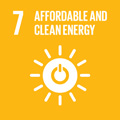- Docente: Laura Sandra Leo
- Credits: 6
- SSD: FIS/06
- Language: English
- Teaching Mode: Traditional lectures
- Campus: Bologna
- Corso: Second cycle degree programme (LM) in Physics of the Earth System (cod. 8626)
-
from Sep 25, 2024 to Jan 09, 2025
Learning outcomes
By the end of this course the student: 1. is able to quantitatively describe the underlying physical mechanisms and governing equations of selected weather phenomena occurring in complex terrain. 2. is able to identify and interpret the influence of complex terrain features, such as (i) orography, (ii) urban/vegetation roughness, (ii) landcover/landuse thermal heterogeneities, on atmospheric processes and the associated atmospheric circulations at meso- and micro-scales. 3. uses the acquired knowledge to interpret ground-based atmospheric observations of the boundary layer over complex terrain.
Course contents
Starting from a brief review of the fundamental physics laws governing the dynamics and thermodynamics of the atmosphere at the mesoscale, the course will introduce the concept of “complex terrain”, its declinations over different spatial scales (meso- to micro- scale) and geographic conditions, and then deals with specific meteorological phenomena occurring in complex terrain. The course has a major focus on mountain meteorology, but also covers to a minor extend urban meteorology and other advanced topics.
Mountain Meteorology:
- Thermally driven slopes flows: Historical perspective, analytical models and observations.
- Components, diurnal cycle, and synoptic disturbances of the mountain thermally driven circulation.
- Thermal structure of the valley atmosphere - the topographic amplification factor
- Dynamically forced winds over mountains: 2D and 3D obstacle configurations.
- Orographic waves
- Downslope windstorms: shallow-water hydraulic theory, vertical propagating wave theory, wave braking theory
- Valley cold-air pool (CAP)
- Orographic precipitations (basics)
- Turbulence characteristics of the atmospheric boundary layer in complex terrain
- Observations and weather predictions in mountainous regions: an introduction to past and current challenges, and key applications.
Additional topics
- Urban flow patterns from meso- to micro-scale over cities: an introduction to urban meteorology.
- Thermally driven circulations: the urban heat island circulation; the sea breeze circulation and their interaction.
- The role of thermal and aerodynamic roughness discontinuities and heterogeneities. Internal boundary layer. Deviations and limits of the Monin Obukhov similarity theory
- Analysis and interpretation of case studies selected from the scientific literature.
Hands-on Sessions
- Illustration of the dividing streamline concept. Computation of the Brunt Vaisala frequency and other parameters governing terrain-driven flow regimes.
- Investigation of downslope and upslope regimes from an array of flux towers. Data processing and interpretation.
- Analysis of the urban thermal structure and aerodynamic roughness at city and intracity scales.
Readings/Bibliography
- Notes/slides of the lectures.
- Markowski, Paul, and Yvette Richardson. Mesoscale meteorology in midlatitudes. John Wiley & Sons, 2011.
- Barry, Roger G. Mountain weather and climate. Routledge, 2013.
- De Wekker, Stephan FJ, and Bradley J. Snyder. Mountain weather research and forecasting: recent progress and current challenges. Ed. Fotini Katopodes Chow. Vol. 750. Berlin: Springer, 2013.
- Whiteman, C. David. Mountain meteorology: fundamentals and applications. Oxford University Press, 2000.
Teaching methods
Classroom lectures and hands-on sessions in the computer laboratory
Mandatory Lab safety training to be completed in advance: Moduli 1 e 2 di formazione sulla sicurezza nei luoghi di studio, [https://elearning-sicurezza.unibo.it/] are required (E-Learning)
Assessment methods
A written report for each of the hands-on sessions has to be submitted by the student within two weeks from the completion of each session. The reports are evaluated and contribute to the final mark by 40%.
The remaining 60% of the final mark is determined with an oral examination (duration of about 40 minutes) focused on the theoretical part of the lectures (2 questions) and on the discussion of the reports (1 question).Teaching tools
Slide projector, blackboard, and computer laboratory.
Office hours
See the website of Laura Sandra Leo
SDGs




This teaching activity contributes to the achievement of the Sustainable Development Goals of the UN 2030 Agenda.
